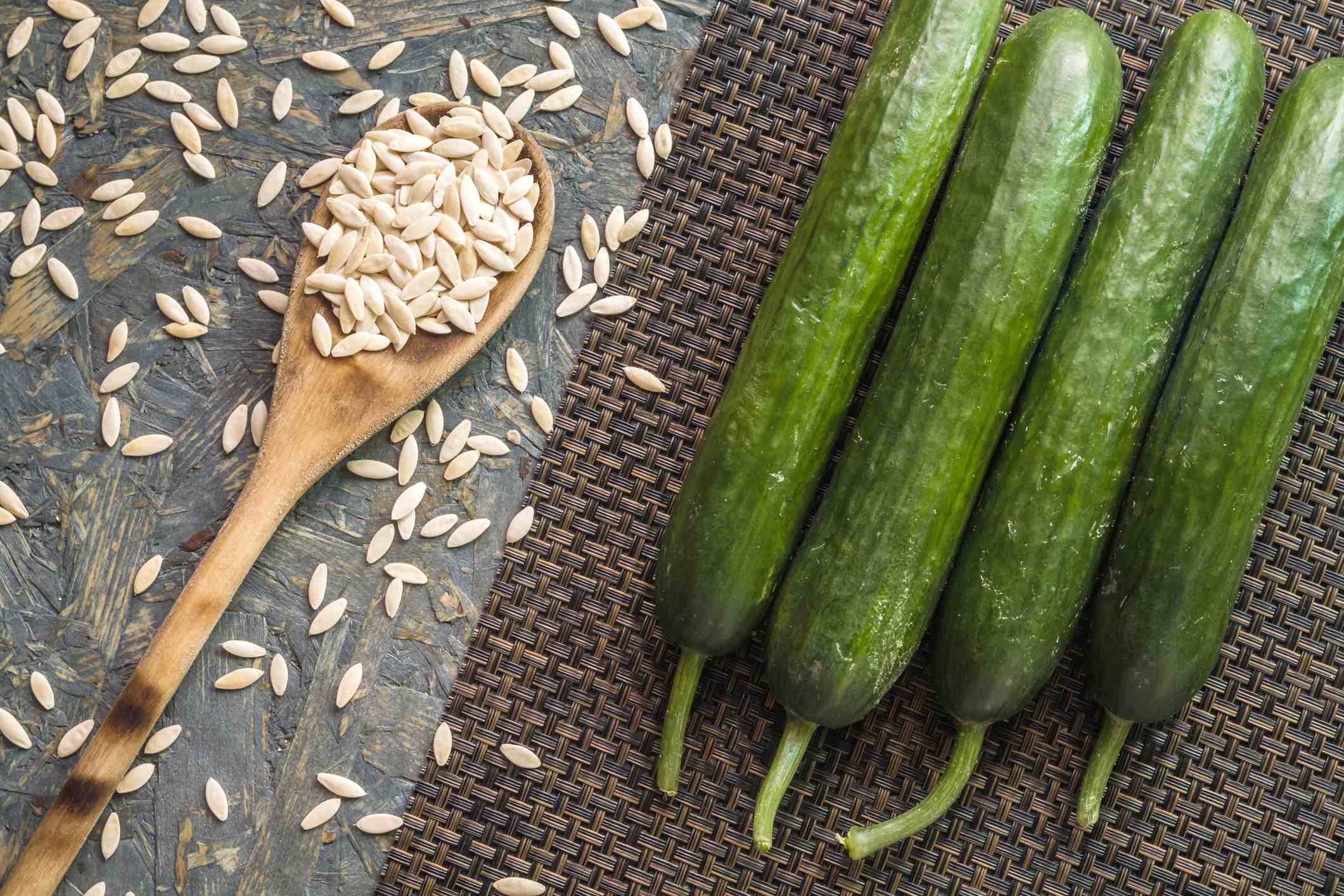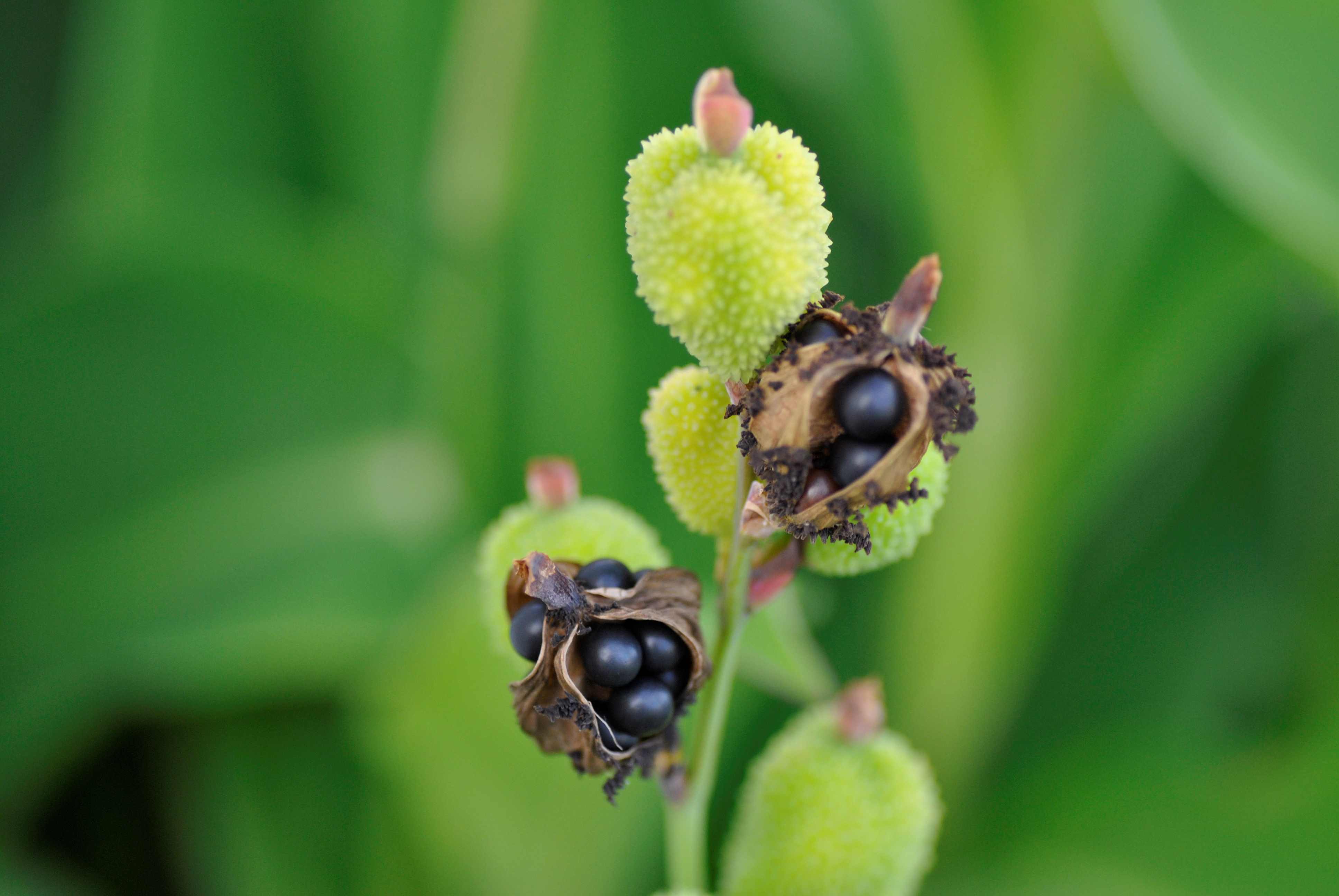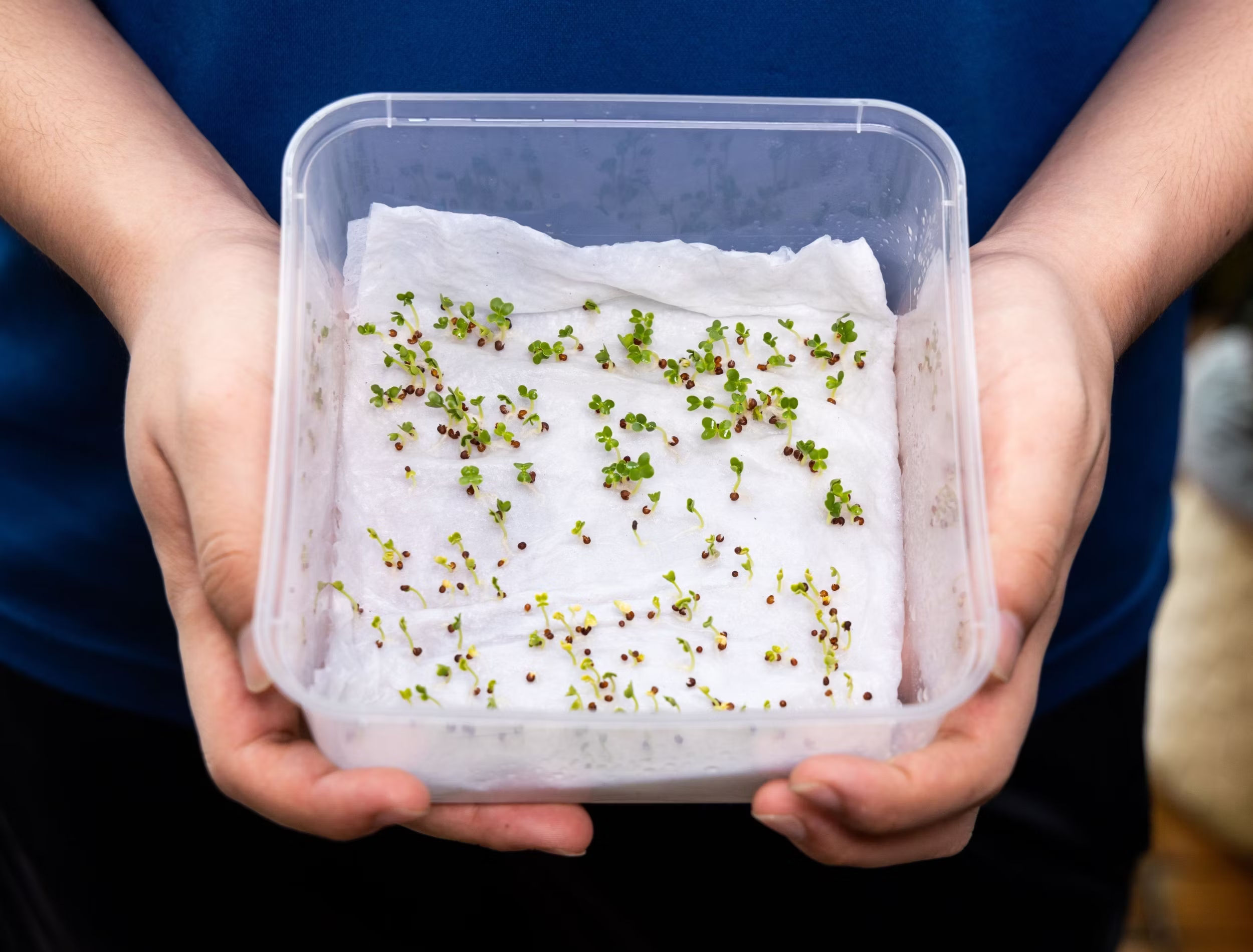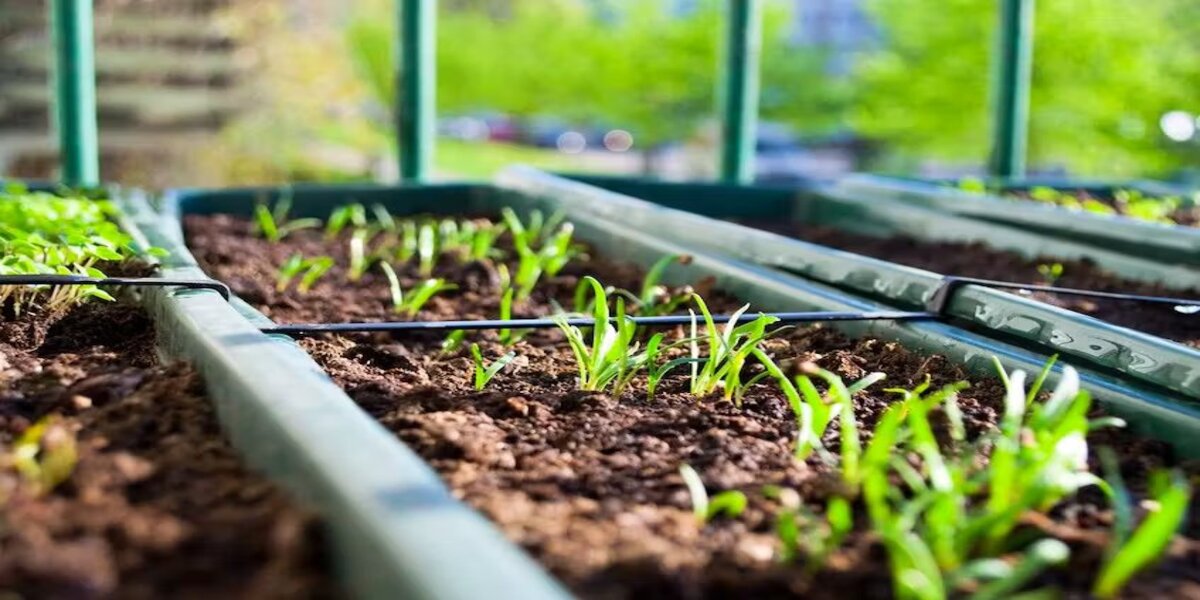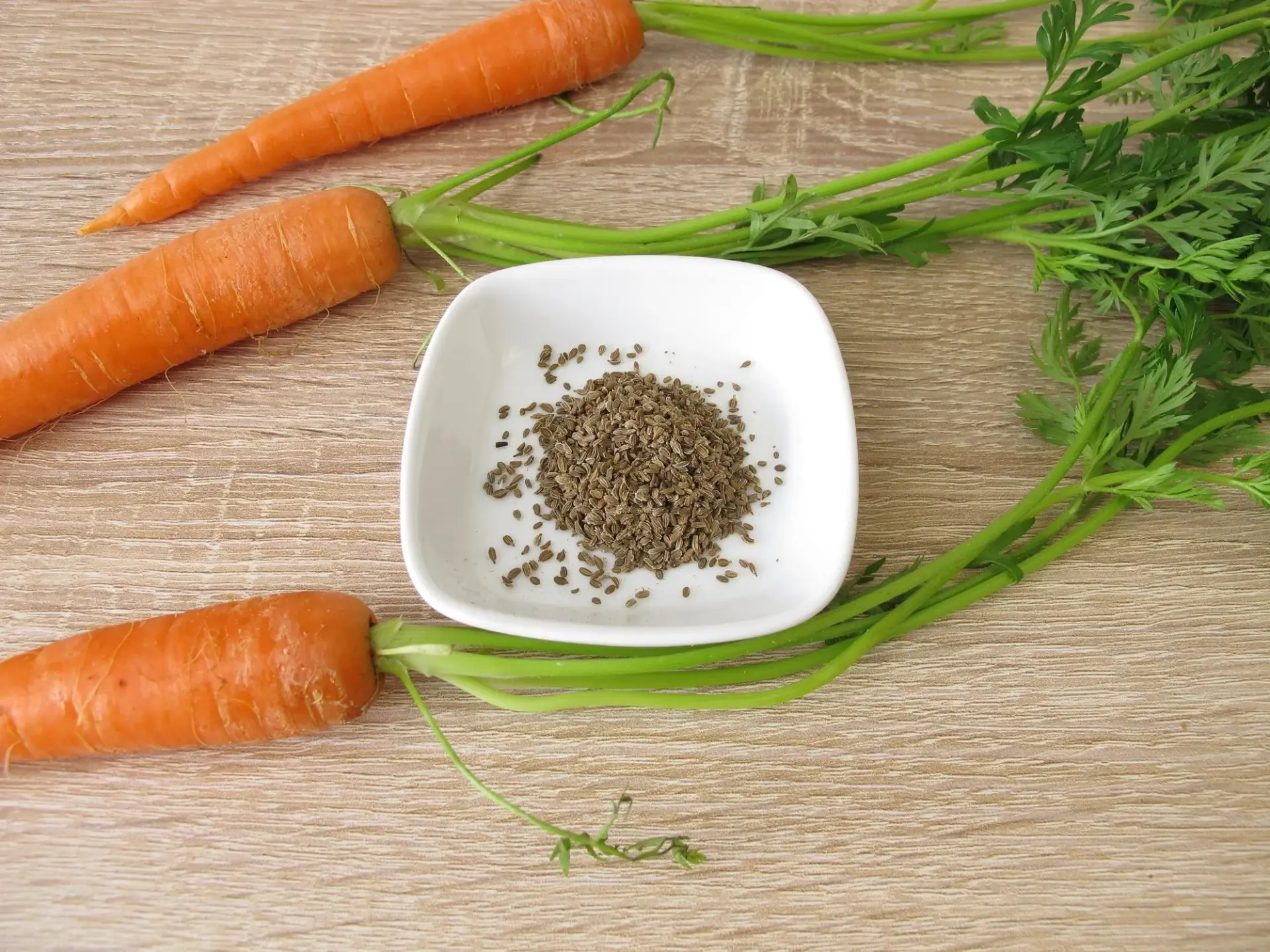Home>Gardening Tips and Tricks>Maximizing Yield>When To Put Light On Germinated Seeds


Maximizing Yield
When To Put Light On Germinated Seeds
Modified: January 22, 2024
Learn when to provide light for germinated seeds and maximize their yield. Discover the optimal timing and techniques for optimal growth and harvest.
(Many of the links in this article redirect to a specific reviewed product. Your purchase of these products through affiliate links helps to generate commission for Chicagolandgardening.com, at no extra cost. Learn more)
Table of Contents
Introduction
Welcome to the world of gardening! If you’re starting your journey by germinating seeds, you may have come across the concept of using light to enhance the growth of your sprouts. Light plays a crucial role in photosynthesis, the process by which plants convert light energy into chemical energy to fuel their growth and development.
While seeds can germinate in darkness, providing them with the right amount and quality of light can have a significant impact on their overall health and vitality. In this article, we’ll explore the benefits of using light on germinated seeds, factors to consider when deciding to use light, the types of light available, and the optimal duration and intensity for the best results.
It’s important to note that not all seeds require light to germinate. Some seeds, like lettuce or tomato, prefer darkness. However, many other seeds, such as herbs and flowers, can greatly benefit from light exposure during the germination process.
Whether you’re a seasoned gardener or just starting out, understanding the role of light in germination can help you make informed decisions and maximize the yield of your plants. So, let’s dive in and discover the fascinating world of using light on germinated seeds!
Benefits of using light on germinated seeds
Using light on germinated seeds provides a multitude of benefits that can significantly enhance the growth and development of your plants. Let’s explore some of these advantages:
- Promotes photosynthesis: Light is essential for photosynthesis, the process through which plants convert light energy into sugars, providing them with the necessary fuel for growth. By exposing germinated seeds to light, you increase their energy production, allowing them to develop strong and healthy leaves.
- Prevents etiolation: Etiolation is a phenomenon where plants grow pale, spindly stems when deprived of light. By providing adequate light to germinated seeds, you can prevent etiolation and promote sturdy, stocky growth, resulting in healthier and more resilient plants.
- Encourages early growth: Light stimulates the production of chlorophyll in plants, which is responsible for trapping light energy for photosynthesis. By exposing germinated seeds to light, you can encourage early growth, leading to faster establishment and development of your plants.
- Improves nutrient absorption: Light triggers the opening of stomata, small openings on the leaves of plants that allow for gas exchange. This not only facilitates the uptake of carbon dioxide but also allows the absorption of essential nutrients from the soil. By using light on germinated seeds, you enhance their ability to efficiently absorb and utilize nutrients for optimal growth.
- Helps prevent stem elongation: When seedlings are grown in low light conditions, they tend to undergo stem elongation as they reach towards the light source. This can result in weak and leggy plants. By providing sufficient light to germinated seeds, you can prevent excessive stem elongation and promote compact, robust growth.
These are just a few of the key benefits of using light on germinated seeds. By harnessing the power of light, you can give your plants a head start and set them up for success throughout their lifecycle.
Factors to consider when deciding to use light on germinated seeds
While using light on germinated seeds has its benefits, it’s important to consider several factors before implementing this practice. Here are some key factors to keep in mind:
- Seed type: Different seeds have varying light requirements. Some seeds, such as lettuce or spinach, prefer darkness for germination, while others, like marigold or basil, benefit from light exposure. Before deciding to use light, research the specific light preferences of the seeds you’re germinating to ensure optimal conditions for germination.
- Light source: The type of light source used can impact the growth of germinated seeds. Natural sunlight is generally the best light source, providing a full spectrum of light wavelengths. However, if natural sunlight is limited, artificial lights, such as fluorescent or LED grow lights, can be used to provide the necessary light intensity and spectrum.
- Light intensity: The intensity of light is crucial for the proper growth of plants. Light intensity is measured in units called lumens or foot-candles. Depending on the type of plant you’re growing, the recommended light intensity may vary. Generally, seedlings require lower light intensity compared to mature plants. Adjust the height and intensity of the light source to match the needs of your germinated seeds.
- Duration of light exposure: The duration of light exposure also affects plant growth. Most germinated seeds benefit from 12-16 hours of light per day. However, some seeds may require less or more light exposure. Pay attention to the specific requirements of the seeds you’re germinating and adjust the duration accordingly.
- Temperature: Light and temperature go hand in hand. Ensure the temperature around your germinated seeds is suitable for their development. Keep in mind that excessive heat or cold can negatively impact seed germination and growth. Aim for a temperature range that is optimal for the specific seeds you’re growing, and maintain a consistent temperature throughout the germination process.
- Air circulation and humidity: Proper air circulation and humidity are important for healthy plant growth. Ensure there is good airflow around your germinated seeds to prevent the buildup of excess moisture or the growth of mold or fungi. Maintain an optimal humidity level according to the needs of your seeds to promote healthy growth.
By considering these factors and tailoring the light conditions to the specific needs of your germinated seeds, you can provide an environment that fosters strong and robust plant growth.
Types of light for germinated seeds
When it comes to providing light for germinated seeds, there are several options to consider. Here are some of the most common types of light sources:
- Natural sunlight: Natural sunlight is the ideal light source for germinated seeds. It provides a full spectrum of light wavelengths that plants need for photosynthesis. Place your germinated seeds in a location where they can receive direct or indirect sunlight for the recommended duration each day.
- Fluorescent grow lights: Fluorescent lights are a popular choice for indoor gardening. They are energy-efficient and produce a moderate amount of light that is suitable for germinated seeds. Cool white fluorescent bulbs are often used during the early stages of seed germination, as they emit high levels of blue light that promote leaf and root development.
- LED grow lights: LED (Light Emitting Diode) lights have gained popularity in recent years due to their energy efficiency and long lifespan. LED grow lights come in various spectrums, including blue, red, and full spectrum. Blue light promotes vegetative growth, while red light stimulates flowering and fruiting. Full spectrum LED lights provide a balanced combination of both blue and red light, making them suitable for the entire growth cycle of plants.
- Incandescent lights: Incandescent lights are not the most ideal choice for germinated seeds as they produce a lot of heat and emit concentrated red light. However, they can be used in combination with other types of lights to provide supplemental lighting.
When selecting a light source for germinated seeds, consider the specific light requirements of the seeds you are growing, the intensity of light needed, energy efficiency, and your budget. It’s important to find the right balance between light quality, intensity, and cost to ensure optimal growth and yield.
Remember to regularly assess the condition of your plants and adjust the light source and duration if needed. By providing the right type of light, you can set your germinated seeds up for success and foster healthy and vigorous plant growth.
Duration and intensity of light for germinated seeds
The duration and intensity of light are crucial considerations when providing optimal conditions for germinated seeds. Here’s what you need to know:
Duration of light exposure: Most germinated seeds benefit from 12-16 hours of light per day. However, it’s essential to research the specific requirements of the seeds you’re growing, as some may need more or less light exposure. During the initial stages of germination, seeds generally require lower light exposure. As the seedlings develop their first true leaves, gradually increase the duration of light to stimulate healthy growth.
Intensity of light: The intensity of light affects the growth and development of plants. Light intensity is measured in units called lumens or foot-candles. Seedlings typically require lower light intensity compared to mature plants. Aim for an intensity of around 1000-2000 lumens during the early stages of germination and gradually increase it as the plant grows. Consulting a light intensity chart specific to the plants you’re growing can provide more accurate guidelines.
Distance from the light source: The distance between your germinated seeds and the light source also affects light intensity. If the light source is too close, it can lead to heat stress or leaf burn, while placing it too far results in insufficient light. Follow the manufacturer’s recommendations for the recommended distance between your germinated seeds and the light source. As the plants grow, adjust the height of the light source to maintain an optimal distance.
Light spectrum: The light spectrum refers to the range of wavelengths emitted by the light source. Different stages of plant growth require specific light spectra. During the germination and seedling stages, blue light (400-500 nm) is essential for promoting leaf and root development. As the plant progresses to the vegetative stage, a combination of blue and red light is beneficial. Adjust the light spectrum accordingly by using appropriate bulbs or adjusting the settings on LED grow lights.
Light cycle: Consistency in providing a regular light cycle is important for the growth and development of germinated seeds. Aim for a consistent light/dark cycle to mimic natural daylight patterns. Using a timer can help automate the light cycle and ensure your seeds receive the appropriate amount of light each day.
Regularly monitor the growth and health of your plants to ensure they’re responding well to the light conditions provided. Adjust the duration, intensity, or distance of the light source if necessary. Remember that each plant and species may have specific light requirements, so it’s crucial to research and tailor the light conditions accordingly.
By providing the right duration and intensity of light, you can optimize the growth and development of your germinated seeds, leading to robust and thriving plants.
Common mistakes to avoid when using light on germinated seeds
While using light on germinated seeds can be beneficial, there are some common mistakes that gardeners often make. Being aware of these mistakes will help you avoid potential issues and ensure the best possible outcomes for your plants. Here are some common mistakes to avoid:
- Insufficient or excessive light: Providing inadequate or excessive light can harm germinated seeds. Insufficient light can lead to weak and leggy seedlings, while excessive light can cause heat stress or leaf burn. Research the specific light requirements for the seeds you’re germinating and adjust the intensity and duration accordingly.
- Improper light distance: Placing the light source too far or too close to the germinated seeds can affect their growth. If the light is too far, the intensity may be insufficient, resulting in weak growth. If the light is too close, it can lead to heat stress and damage the plants. Refer to the manufacturer’s recommendations for the optimal distance and adjust as the plants grow.
- Inconsistent light cycles: Providing inconsistent light cycles can disrupt the growth and development of germinated seeds. Inadequate or irregular light exposure can lead to inconsistent growth patterns or even plant stress. Use timers or automated systems to ensure consistent and regular light cycles for optimal results.
- Using the wrong light spectrum: Different stages of plant growth require specific light spectra. Using the wrong light spectrum, such as only providing red light during the germination stage, can lead to poor growth and development. Research the light requirements for the specific plants you’re growing and provide a suitable light spectrum accordingly.
- Ignoring temperature and humidity: Light conditions alone are not enough for healthy plant growth. Ignoring temperature and humidity levels can lead to unfavorable growing conditions. Ensure that the temperature around your germinated seeds is within the appropriate range for optimal growth. Additionally, maintaining proper humidity levels will prevent issues like mold or fungal growth.
- Overlooking plant-specific light requirements: Each plant species has its own light requirements. Some seeds may benefit from full sun exposure, while others may require partial shade. Take the time to research and understand the light preferences of the seeds you’re germinating to ensure you’re providing the most suitable light conditions.
By avoiding these common mistakes, you can improve the chances of success when using light on germinated seeds. Remember to monitor your plants closely, make adjustments as needed, and provide a consistent and suitable environment for their growth.
Conclusion
Using light on germinated seeds can significantly enhance their growth and development, leading to healthy and thriving plants. Understanding the benefits of light exposure, along with factors to consider like seed type, light source, intensity, duration, and the potential mistakes to avoid, is essential for maximizing the yield of your plants.
By providing the right type of light and ensuring optimal conditions, you can promote photosynthesis, prevent etiolation, encourage early growth, improve nutrient absorption, and prevent stem elongation. The right balance of duration and intensity of light can make a substantial difference in the health and vigor of your plants.
Remember to consider the specific light requirements of the seeds you’re germinating and choose the appropriate light sources such as natural sunlight, fluorescent or LED grow lights. Pay attention to the temperature, air circulation, and humidity levels, as they can all impact plant growth.
Avoid common mistakes such as insufficient or excessive light, improper light distance, inconsistent light cycles, incorrect light spectrum, and overlooking plant-specific requirements. By avoiding these pitfalls, you can provide an optimal lighting environment and set your germinated seeds up for success.
In conclusion, light is a vital element in the germination process and plays a crucial role in the growth and development of plants. By understanding and implementing the factors discussed in this article, you can ensure that your germinated seeds receive the right amount and quality of light, paving the way for bountiful harvests and flourishing gardens. Happy gardening!

